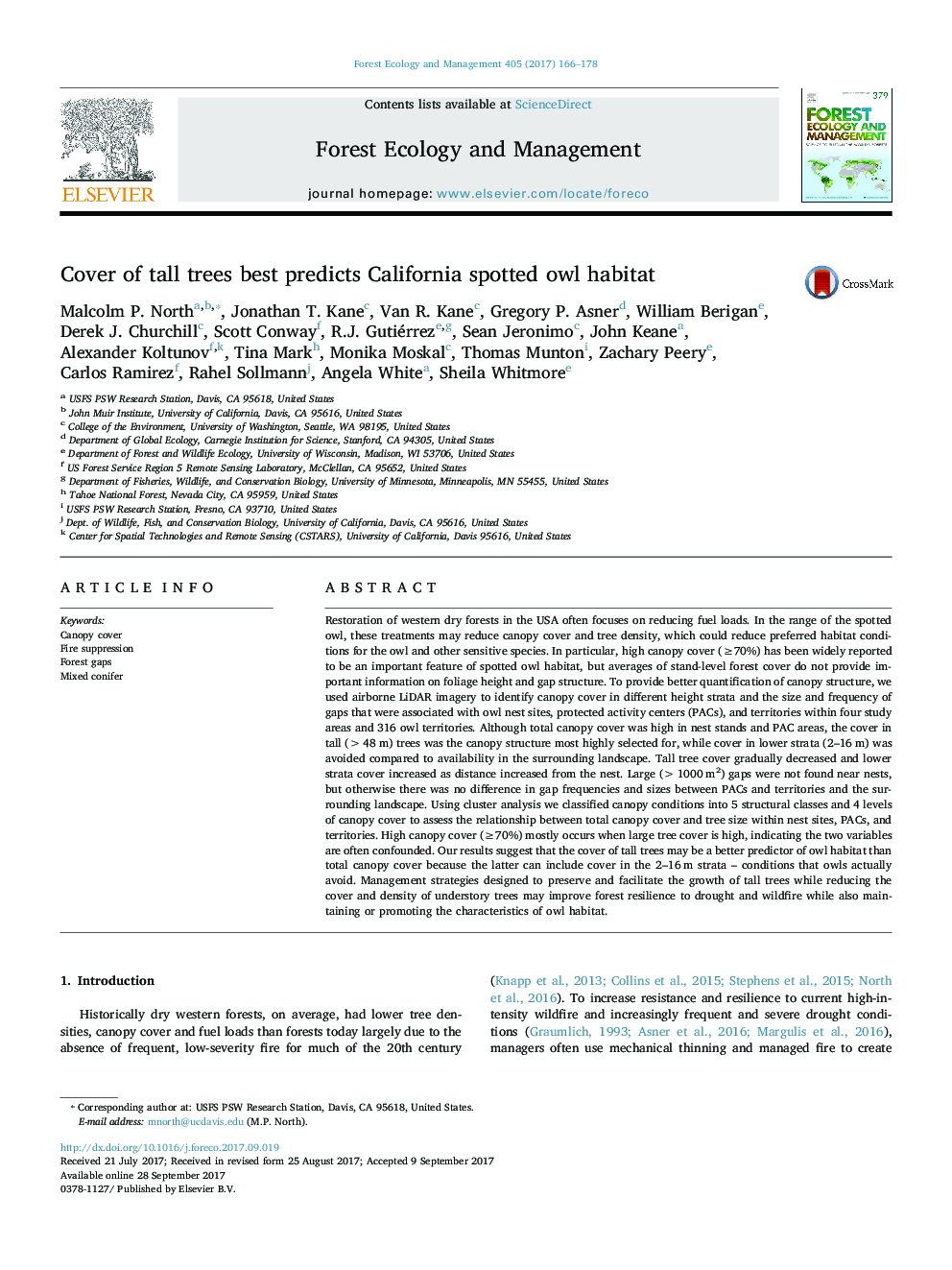| کد مقاله | کد نشریه | سال انتشار | مقاله انگلیسی | نسخه تمام متن |
|---|---|---|---|---|
| 6459067 | 1421353 | 2017 | 13 صفحه PDF | دانلود رایگان |
- High canopy cover (â¥70%) is considered an important feature of spotted owl habitat.
- Using LiDAR we found tall (>48Â m) tree cover was the most important canopy structure.
- Lower strata (2-16Â m) cover was avoided compared to its landscape availability.
- Large tree cover may more directly benefit owls than high levels of total cover.
Restoration of western dry forests in the USA often focuses on reducing fuel loads. In the range of the spotted owl, these treatments may reduce canopy cover and tree density, which could reduce preferred habitat conditions for the owl and other sensitive species. In particular, high canopy cover (â¥70%) has been widely reported to be an important feature of spotted owl habitat, but averages of stand-level forest cover do not provide important information on foliage height and gap structure. To provide better quantification of canopy structure, we used airborne LiDAR imagery to identify canopy cover in different height strata and the size and frequency of gaps that were associated with owl nest sites, protected activity centers (PACs), and territories within four study areas and 316 owl territories. Although total canopy cover was high in nest stands and PAC areas, the cover in tall (>48 m) trees was the canopy structure most highly selected for, while cover in lower strata (2-16 m) was avoided compared to availability in the surrounding landscape. Tall tree cover gradually decreased and lower strata cover increased as distance increased from the nest. Large (>1000 m2) gaps were not found near nests, but otherwise there was no difference in gap frequencies and sizes between PACs and territories and the surrounding landscape. Using cluster analysis we classified canopy conditions into 5 structural classes and 4 levels of canopy cover to assess the relationship between total canopy cover and tree size within nest sites, PACs, and territories. High canopy cover (â¥70%) mostly occurs when large tree cover is high, indicating the two variables are often confounded. Our results suggest that the cover of tall trees may be a better predictor of owl habitat than total canopy cover because the latter can include cover in the 2-16 m strata - conditions that owls actually avoid. Management strategies designed to preserve and facilitate the growth of tall trees while reducing the cover and density of understory trees may improve forest resilience to drought and wildfire while also maintaining or promoting the characteristics of owl habitat.
Journal: Forest Ecology and Management - Volume 405, 1 December 2017, Pages 166-178
